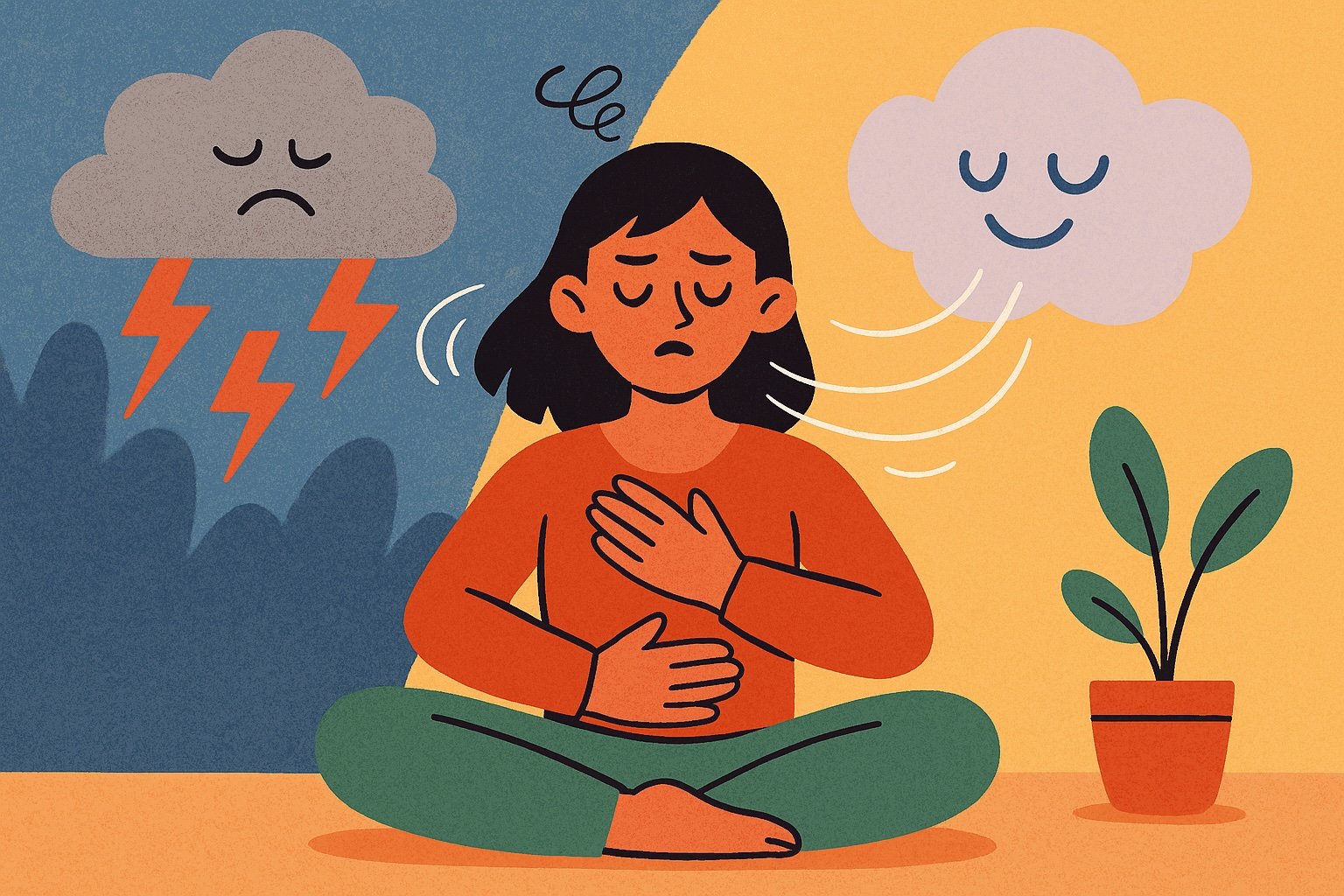Stress, Anxiety, and the Modern Nervous System
Anxiety and chronic stress are everywhere. Whether it’s work pressure, emotional overwhelm, or just living in an always-on world, many people feel stuck in a low-grade state of internal chaos. And while slow breathing and meditation have become common go-to tools for calming the nervous system, there’s another, more surprising approach gaining traction, one that might feel counterintuitive at first: leaning into stress to break free from it.
That’s where breathwork, specifically Conscious Connected Breathing (CCB) comes in. And not just any breathwork. IMD Breathwork takes this concept further, harnessing a natural rebound effect in the nervous system that helps release anxiety from the inside out.
The Default Approach: Slowing Down to Calm Down
We know that slow, controlled breathing activates the parasympathetic nervous system, our rest-and-digest mode. It lowers heart rate, reduces cortisol, and creates a sense of internal safety. Practices like box breathing, 4-7-8, and coherent breathing are incredibly effective at regulating the nervous system and creating a state of calm.
But here’s the catch: for some people, especially those stuck in a loop of unresolved stress or anxiety, slowing down might not be enough. Their system may be holding onto tension, trauma, or emotional backlog that calm breathing can’t access.
The Rebound Effect: Introducing Stress to Find Deep Calm
This is where Conscious Connected Breathing becomes so powerful. Unlike parasympathetic techniques, CCB intentionally introduces a controlled stressor to the system. Rapid, continuous breathing without pauses creates a state of temporary physiological stress: marked by:
Hypocapnia (low CO₂ levels)
Cerebral vasoconstriction
Mild hypoxia in the prefrontal cortex
Emotional limbic activation
All of which sound intense, but they’re meant to be. By elevating the stress in a safe, guided environment, CCB gives the body a controlled “spike.” This shift causes the brain to deactivate its usual defences, allowing buried emotion, trauma, or stress responses to surface.
Then, once the breathing slows or transitions into parasympathetic patterns, the nervous system doesn’t just return to baseline, it drops below baseline into deep calm. This is the rebound effect: a powerful biological reset that happens after a controlled wave of activation.
Stress With Intention = Empowerment
When anxiety hits in real life, it often feels like something happening to us, a loss of control. But in guided breathwork, we choose to enter a heightened state of stress on our own terms. We create the intensity and then return ourselves to calm.
That’s what makes IMD Breathwork so unique. It’s not about avoiding discomfort, it’s about safely moving through it.
We pair intense conscious breathing with specifically timed transitions into slower parasympathetic breathwork, guiding the body into that post-stress state of deep regulation. In a way, it’s training your nervous system to remember how to feel safe again, even after activation.
You Feel the Difference Immediately
This isn’t theoretical. Participants often report feeling light, relaxed, and profoundly clear after a session, not because they avoided stress, but because they met it head-on, released it, and recovered with intention.
We’ve had countless people with chronic anxiety tell us:
“I haven’t felt this calm in years.”
How It Works: The Science of Releasing Then Resetting
CCB Induces Controlled Stress: Hypocapnia, mild hypoxia, and emotional activation disrupt old patterns.
Default Defences Collapse: With the prefrontal cortex disengaged, the subconscious rises to the surface.
Somatic Expression Happens: Shaking, tears, or emotional release clear stored energy from the body.
Parasympathetic Breathing Transitions In: The nervous system recalibrates, often going deeper than baseline.
Neuroplasticity Increases: The brain becomes more malleable, open to new wiring and patterns of calm.
Conclusion: Calm Doesn’t Always Come from Stillness
Controlled CCB Breathwork proves that stillness doesn’t have to start with stillness. Sometimes, to find calm, you need to move through the chaos with intention. You need to breathe a little harder, go a little deeper, and trust that your nervous system is wise enough to find its way back to balance.
That’s the paradox of breathwork: real peace is sometimes found just on the other side of intensity.

